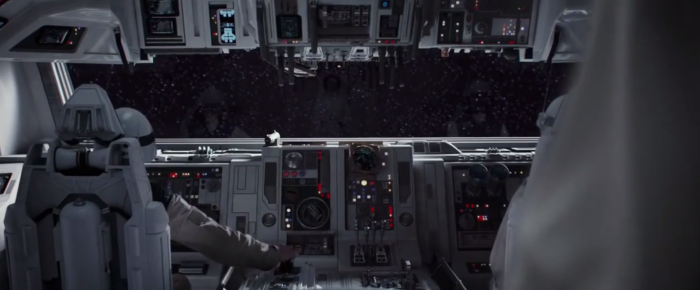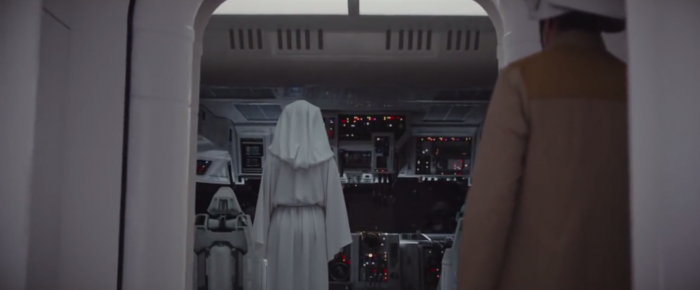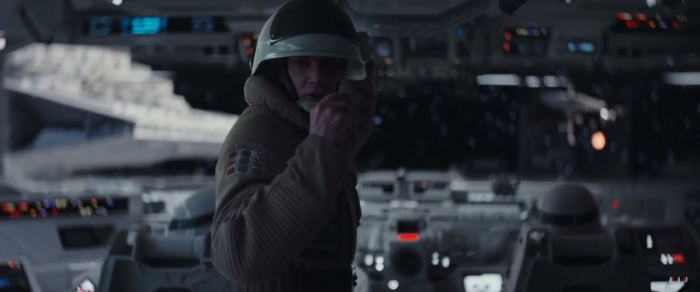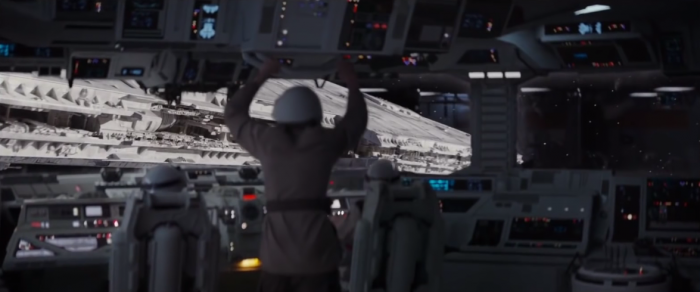There Are Even More Visual Effects In 'Rogue One' Than You Realized
Everyone knows that visual effects are required in order to bring a movie like Rogue One: A Star Wars Story to life. They may be more advanced than when George Lucas first took us to a galaxy far, far away, but we wouldn't have the worlds, spaceships and creatures necessary to bring Star Wars to life without the magic of visual effects.
In the case of Rogue One, there are plenty of sequences that are composed entirely of visual effects, whether they're space battles or environments that are composed entirely of digital pieces. However, there are some sequences where you might not have realized that a partial virtual set was employed. Instead of throwing actors into a room that is entirely green/blue screen, the crew built proxy sets where the nitty-gritty details would be added in post-production by Industrial Light and Magic. They're details that you never would have thought were visual effects.
During a keynote presentation given by executive producer and visual effects supervisor John Knoll at a press event held a couple weeks ago for the release of Rogue One on home video, John Knoll explained why they used virtual sets for a couple of their interior spacecraft locations:
"A spacecraft cockpit interior is a set where there are a lot of little techy bits, control panels and graphics displays and other things that are kind of a job to manufacture well. We had a couple of scenes on this bridge, but total screentime is probably less than 30 seconds, so it didn't make a whole lot of economic sense to do a build as elaborate as this. It wasn't really going to be advertised over particularly long scenes. We elected not to build it as a full set. But if you don't build it as a full set and you just have a couple characters in front of a blue screen, that can be a very alienating experience for the actors. It's difficult to light your actors so that they'll go into that virtual environment in a believable way.
So I got talking with Greg Fraser about the right way to approach this work so we can get the best results. It was easiest for him to deal with. What we came up with was this idea of building the basic forms of the set, very simple undetailed forms as a proxy. It's about the right shape, something that Greg can light in a meaningful way."
Here's a quick breakdown showing what the physical set looked like so you can see what they filled in with VFX:
They had the same issue with the cockpit of the Tantive IV and the Hammerhead Corvette as they did with Admiral Raddus' ship. The cockpit of both those ships are rather similar, with all the lights, switches, levers, displays and whatnot. Since they were only going to be seen for two quick scenes, again, building an entire set wasn't necessarily a smart option here either. Here are some shots of inside the cockpit of those ships:
Believe it or not, almost all of the lights, switches, levers and other cockpit dashboard features in that ship were added in post-production. There are only the basic shapes of the boards on which all of those features sit upon, all in that bright white color with essentially no detailed features.
Even cooler is that the production team actually used parts of the same set they built for the Tantive IV cockpit (both physically and digitally) for the Hammerhead Corvette. Sadly, Industrial Light and Magic wasn't able to provide a VFX breakdown of those two sets, but you get an idea of what they looked like when you see the before image of Admiral Raddus' ship.
This is a new technique that ILM took on for Rogue One and John Knoll noted, "I think we'll be doing more of this on future projects."




